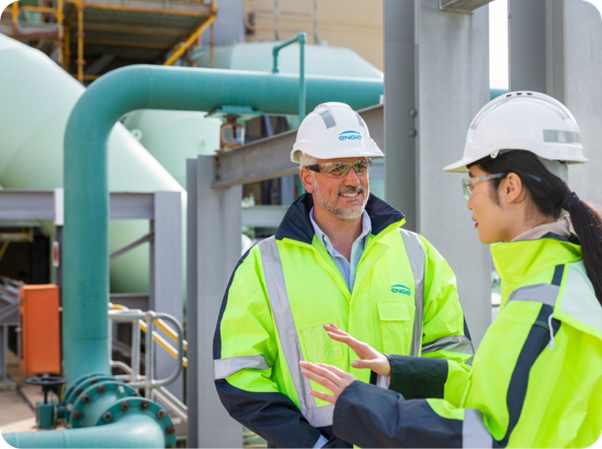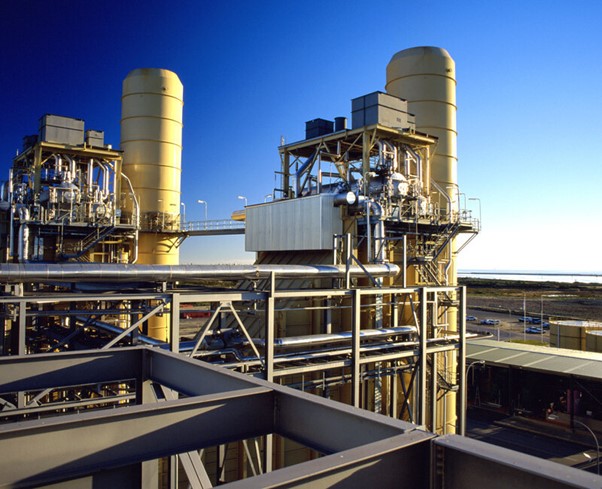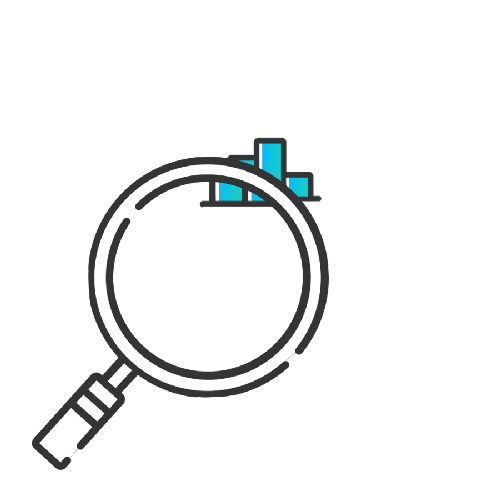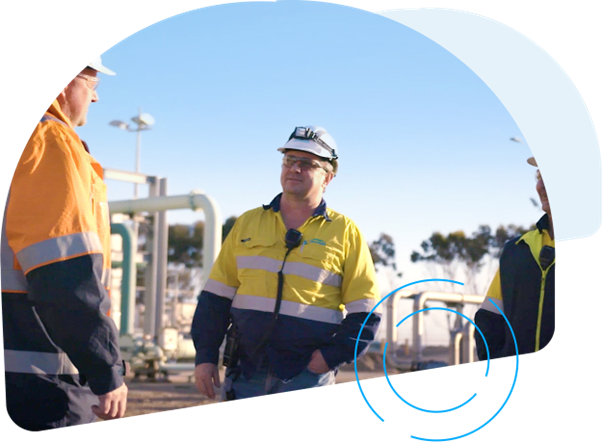Error message title

Error message title
Searching great energy plans for you

Overview
Location: North-west of Adelaide CBD, South Australia
Maximum Capacity: 497 MW
Commissioned: March 2001
Features
- Combined Cycle Gas Turbine Technology
- 497 MW of electricity generation
- Provision of power of 17% of SA thermal generation needs

Pelican Point power station (located 20km north-west of the Adelaide central business district) was commissioned in March 2001.
The station uses Combined Cycle Gas Turbine (CCGT) technology to produce up to 497 MW of electricity which is about 17% of South Australia’s thermal generation needs.
Pelican Point Power Station has two gas turbines and a steam turbine. The waste heat from the gas turbines is recovered to produce steam which drives the steam turbine generator, raising the efficiency of the plant.
Pelican Point Power station is a critical infrastructure asset in ensuring energy security and system stability in South Australia.
More information
How does gas-fired power work?
Gas-fired power stations burn natural gas to produce electricity.
There are two main ways they do this – open cycle and combined cycle.
Open Cycle Gas Turbine
Open-cycle production is the most common method. Natural gas is burned to create a pressurised gas, which powers a turbine that is connected to a generator. The turbine turns the magnets in the generator to create electricity.
Combined Cycle
The Combined-Cycle Gas & Steam Turbine (CCGT) plant generates energy using two different types of turbines in combination: a gas turbine and a steam turbine. In essence, it recycles its fuel to maximise its electricity output. ENGIE’s Pelican Point Power Station uses this ingenious method of electricity generation.
The hot gases generated by burning natural gas power the gas turbine. The gases are still hot enough to generate steam in a heat recovery boiler which is then used in a steam turbine. The combination of these two thermodynamic cycles increases plant efficiency to in excess of 50%, which is much higher than the 35% to 40% achieved by traditional plants.
Your feedback
Our community and stakeholders provide valuable feedback that helps shape our work. We appreciate hearing from you on what we are doing well and where we haven’t met the mark, so that we can take ownership and improve.
Our Community & Stakeholder Feedback Framework details our approach to feedback and how we manage complaints.
FAQs
1. What feedback can I provide?
You can provide feedback about ENGIE operational assets and our asset development projects. If your feedback relates to other ENGIE activities, including our retail and residential energy solutions, please visit our contact us page.
At ENGIE Renewables Development, we define feedback as any communication we receive from you. Types of feedback include:
| Comments, which can be either positive or negative but do not require further action. | |
| Enquiries, which are neither positive nor negative but require further action. | |
| Complaints, which are negative and typically require a response or resolution. |
2. How can I provide feedback?
You can provide feedback by:
- sending an email to [email protected]
- calling our dedicated projects phone line on 1800 845 067 Monday to Friday, 9am to 5pm
- talking to us in person
If you are deaf or have a hearing or speech impairment, you can use the National Relay Service to provide your feedback. If English is not your first language, you may use the National Translating and Interpreting Service. We accept feedback from other people on your behalf.
3. How will my feedback be dealt with?
All feedback will be recorded and dealt with according to our five guiding principles:
- Fairness: You will be treated fairly. If your feedback is negative and handled as a complaint, our actions and decisions will be respectful, impartial, and evidence-based.
- Transparency: Information about how to provide feedback is published on our website, with open and honest feedback sought.
- Accountability: We treat all feedback as an opportunity for continuous improvement.
- Accessibility: Feedback can be provided verbally over the phone or in person; or in writing by letter, email or online form.
- Responsiveness: If a response is required, we will reply courteously and within our stated timeframes, and we will keep you informed about the progress of a complaint.
4. How will my feedback, including complaints, be managed?
Feedback, including complaints, will be managed through our feedback process.
5. What if I am not happy with the outcome of my complaint?
If you believe your complaint isn’t adequately resolved, you can ask us to escalate the matter to a staff member at a higher level within our organisation, who will work with you to investigate further and find a solution.
If the complaint still isn’t resolved to your satisfaction, we suggest you contact the Australian Energy Infrastructure Commissioner or your local ombudsman.
Phone: 1800 451 524
Phone: 1800 068 908
Phone: 1800 806 314
Phone: 1800 182 150
Phone: 1800 117 000
6. How is my personal information handled?
Personal information that identifies individuals will only be disclosed or used by ENGIE Renewables Development as permitted under the relevant privacy laws, secrecy provisions and any relevant confidentiality obligations.
The ENGIE ANZ Group’s Privacy Policy details our commitment to complying with the Privacy Act 1988 (Cth) (Privacy Act).

